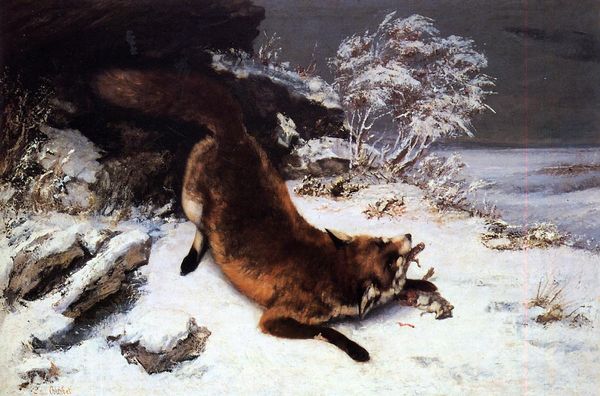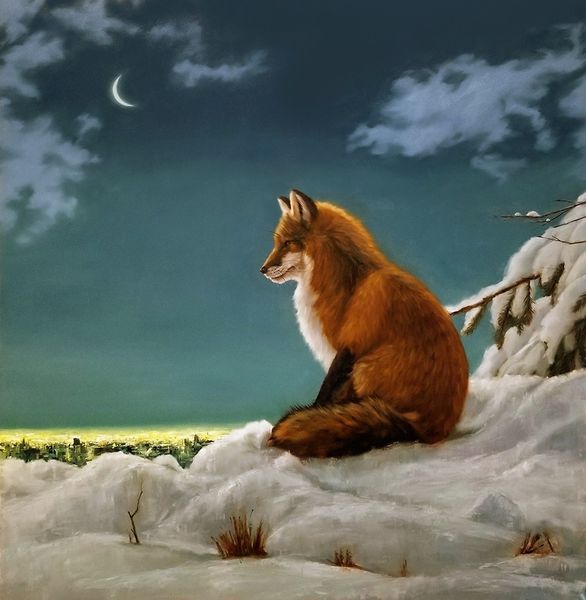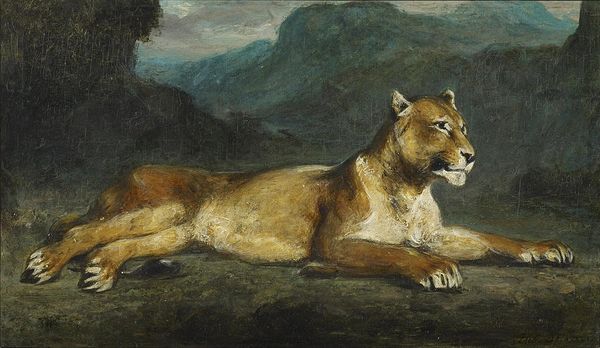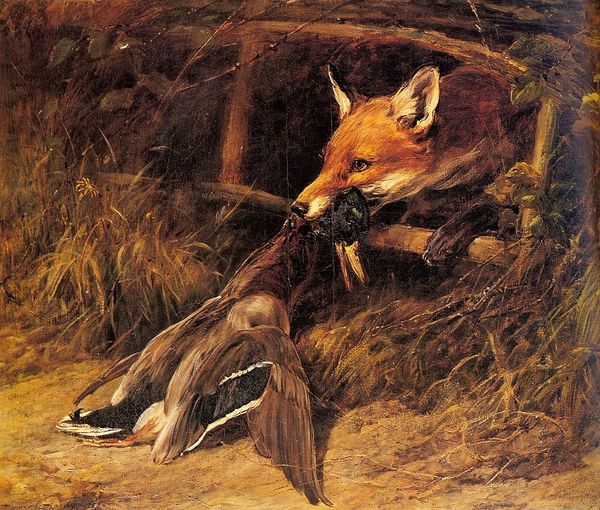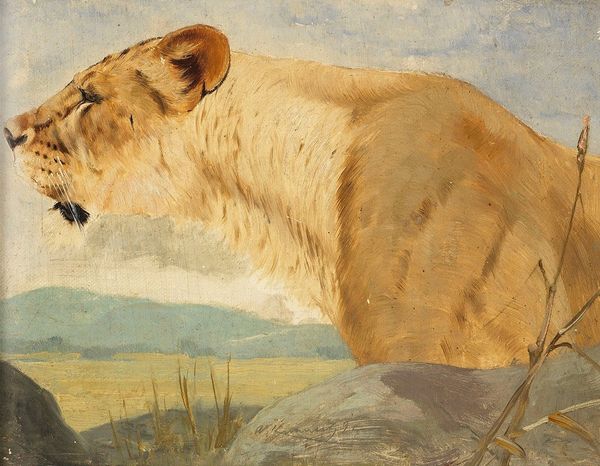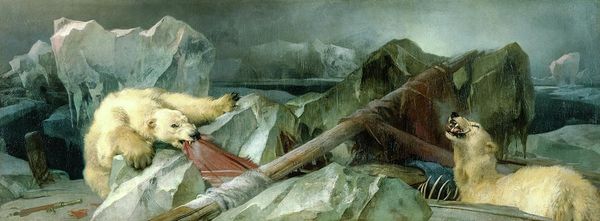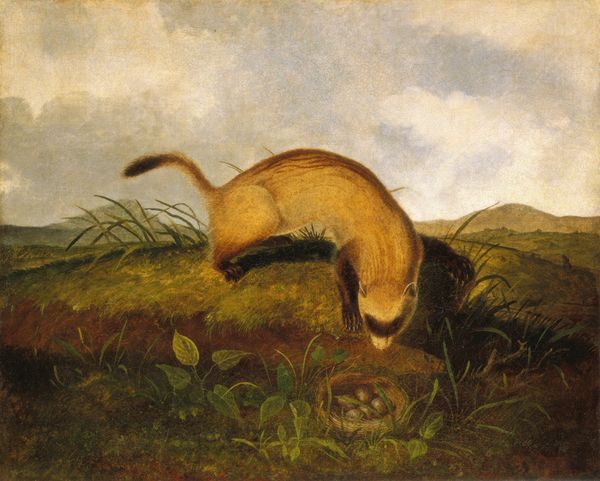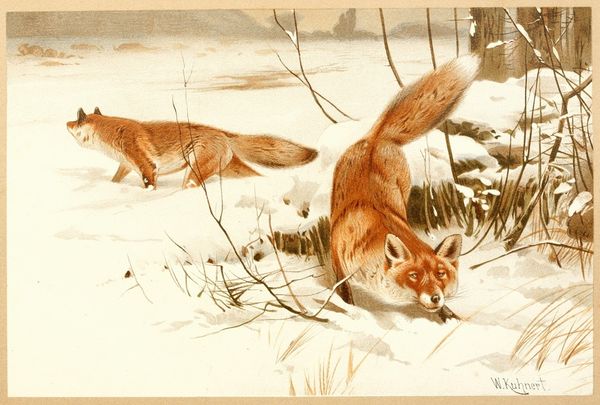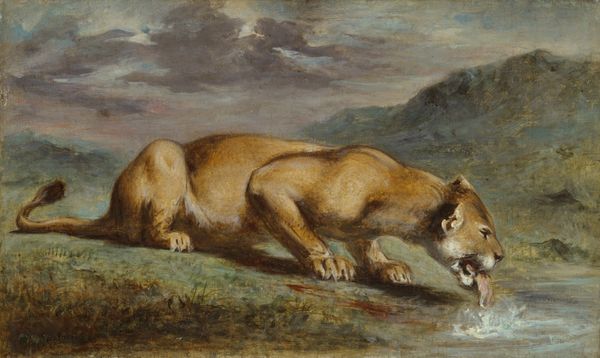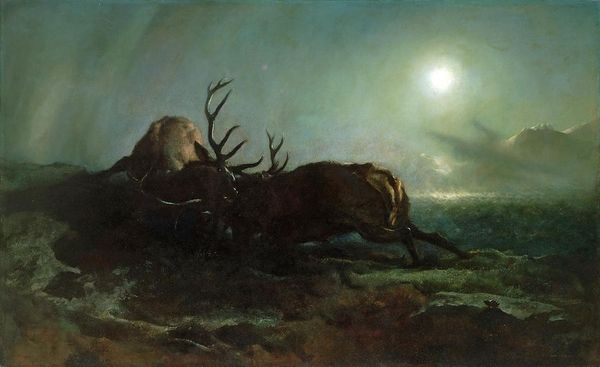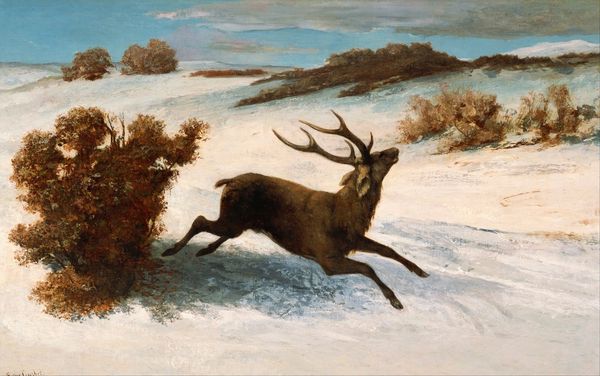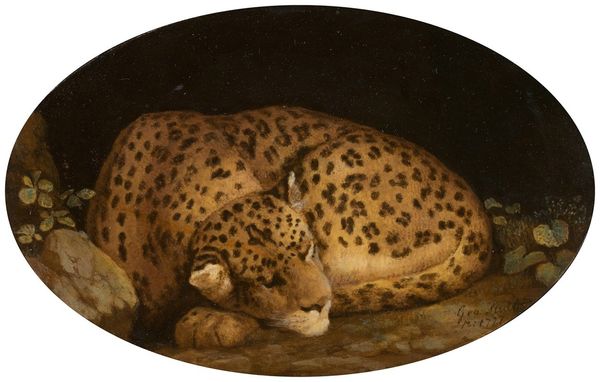
Copyright: Public domain
Curator: Winslow Homer's "Fox Hunt," created in 1893, depicts a stark scene of survival. Editor: There's a certain starkness to it, absolutely. The heavy, dark birds contrast against the vast expanse of snow. You can practically feel the cold. Curator: Indeed. Painted with oil on canvas, Homer presents us with a landscape where a fox struggles to outrun crows in the depths of winter. The setting is believed to be Prouts Neck, Maine, a location he frequented. The location impacted the visual vocabulary we read here. Editor: Prouts Neck, interesting. Considering the socio-economic conditions of the time, I’m drawn to the raw depiction of the food chain, especially as a social commentary on the Gilded Age. There is an evident economic hierarchy here that extends beyond nature. The materials and labor behind creating this work – canvas, pigments, the artist's time – reflect the consumption patterns and the class structure inherent within the art world. Homer, of course, successfully navigating and benefiting from this same system. Curator: Absolutely. Furthermore, consider how this work has been framed within museum culture, shaping our perception of American identity and wilderness. The Pennsylvania Academy of the Fine Arts exhibiting this since 1894 impacts its canonical position in US art. The stark palette, however, deviates quite substantially from many contemporary academic sensibilities in both Europe and the US. Editor: Yes, and let's consider the role of the image itself, especially its political potential, or lack thereof. Does the portrayal of wildlife reflect the increasing public interest in conservation? The painting certainly doesn’t directly tackle urbanization and its impacts. It's a different kind of critique – one rendered in paint. Curator: I see the way that looking closely at the visual cues, even the placement of the birds or the fox's posture, tells the viewers where they must direct their reading of this narrative. Ultimately this shapes the artwork’s cultural impact. Editor: Precisely. We see how even the raw materials tell us as much about the system in which this work originated as any analysis of symbolic language. Curator: Looking closely has made me reconsider assumptions I carried about "Fox Hunt". Editor: Me too, that there is always more than a surface analysis available.
Comments
No comments
Be the first to comment and join the conversation on the ultimate creative platform.
